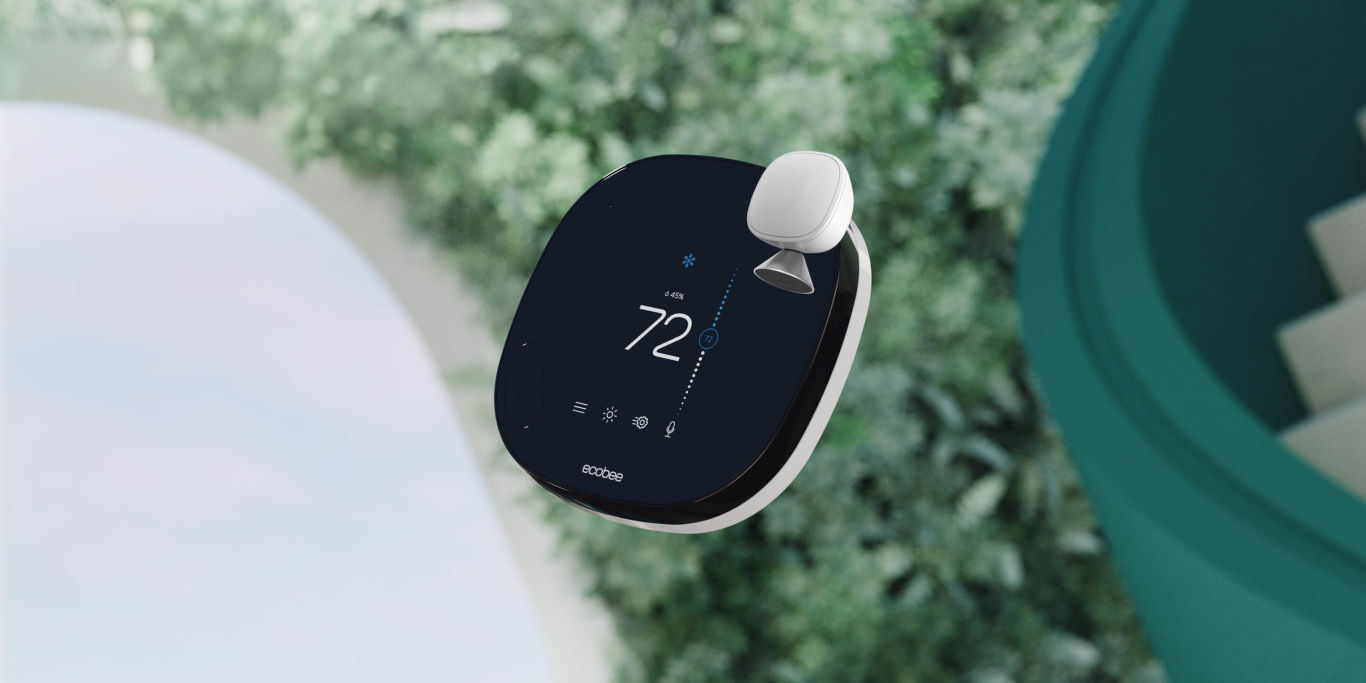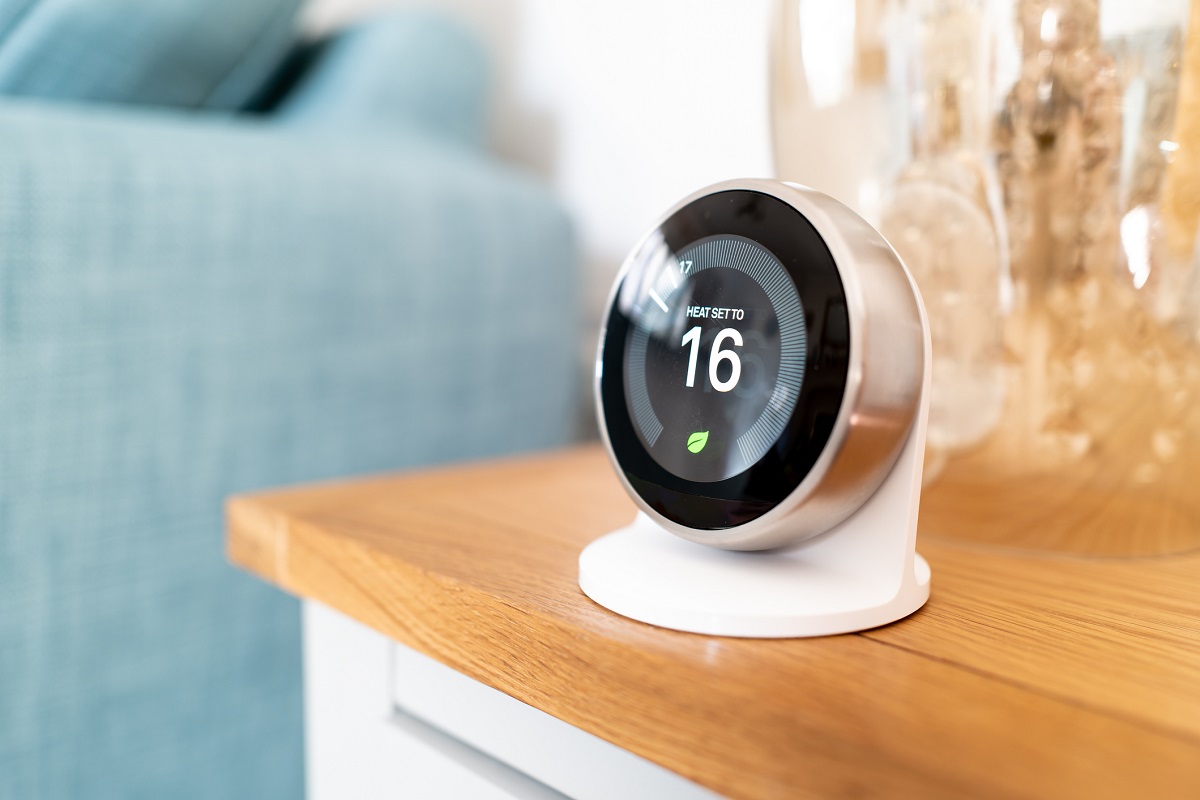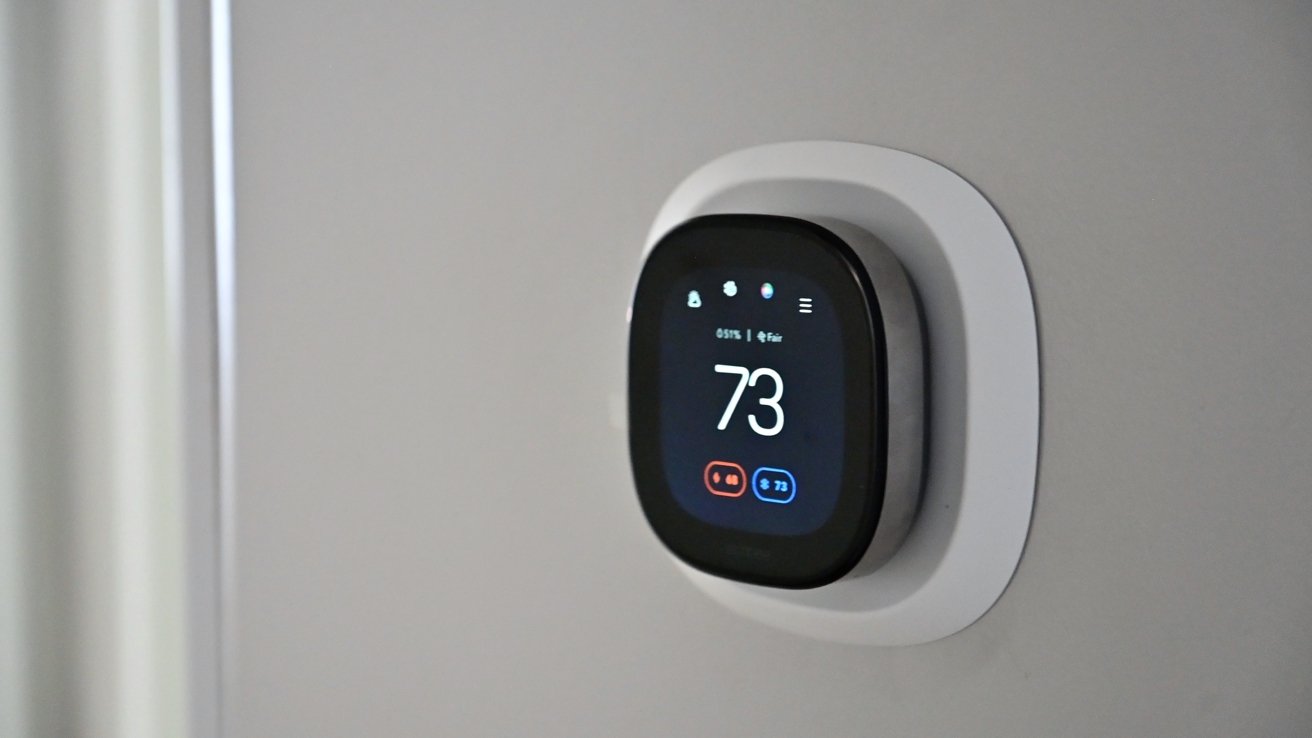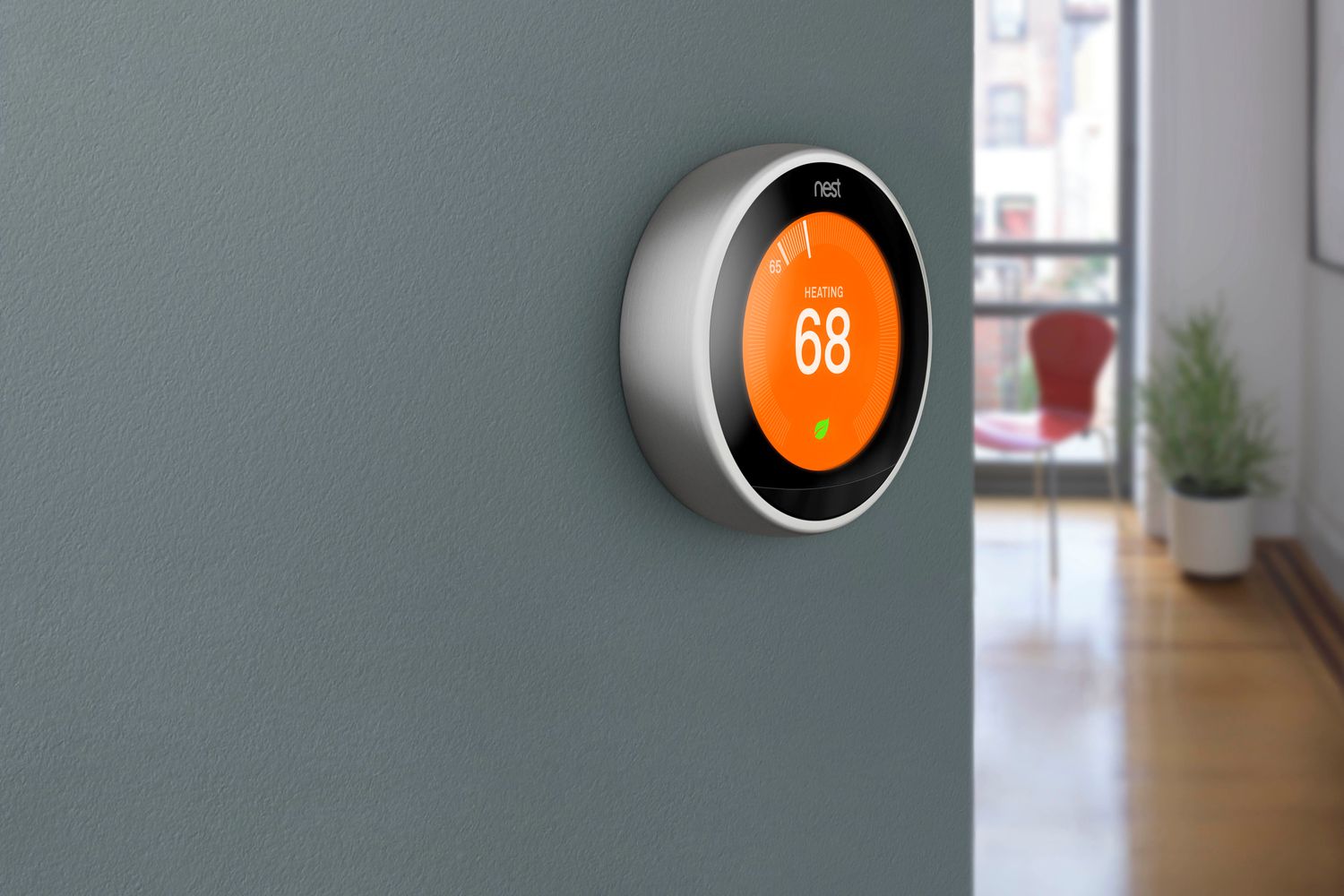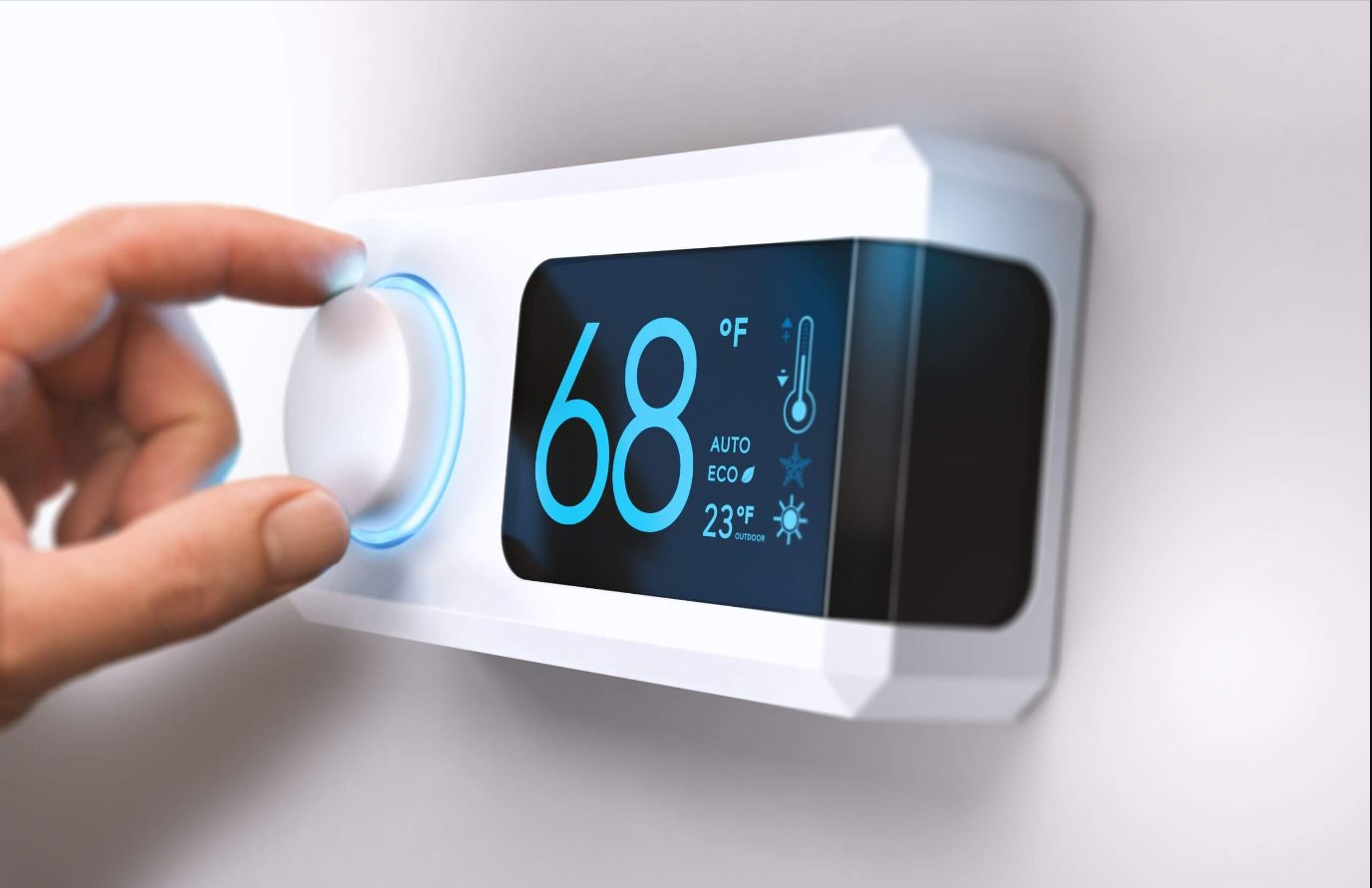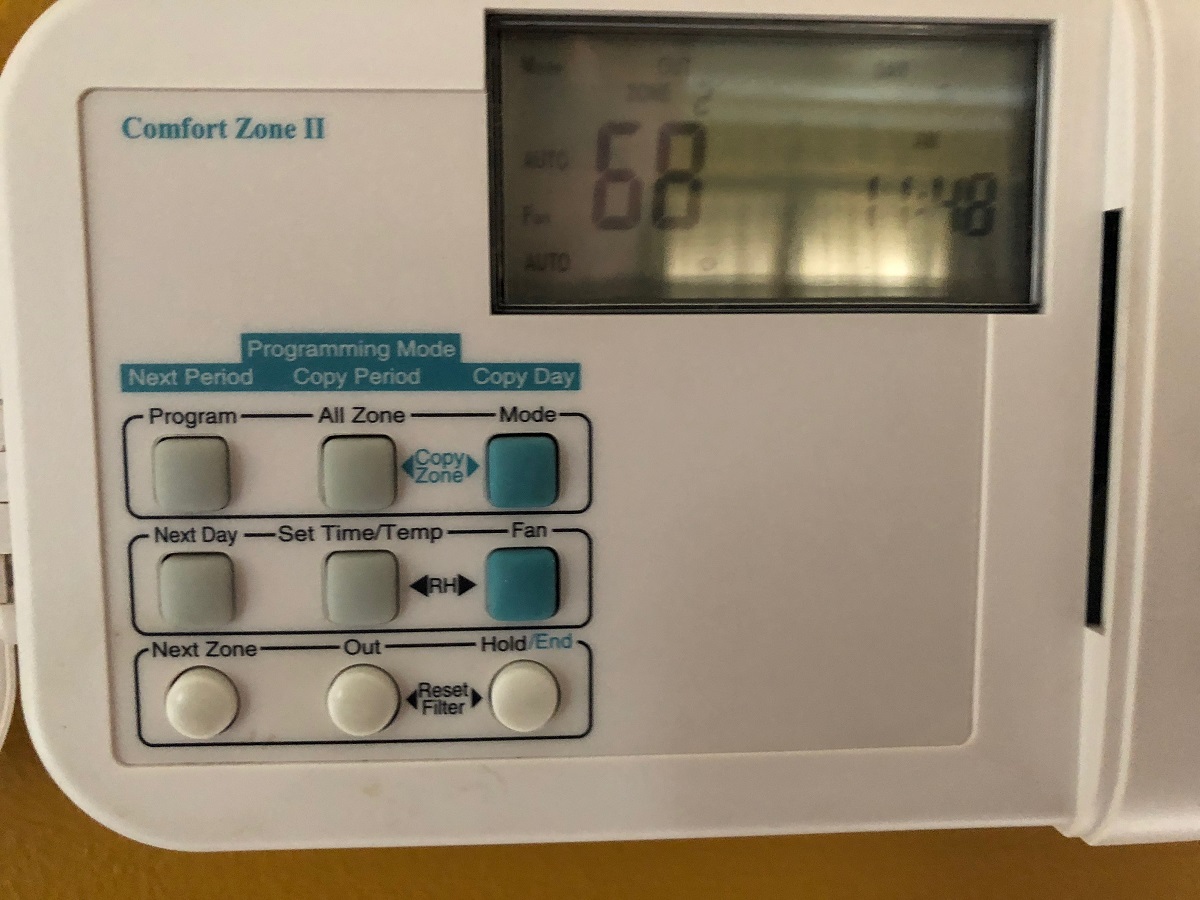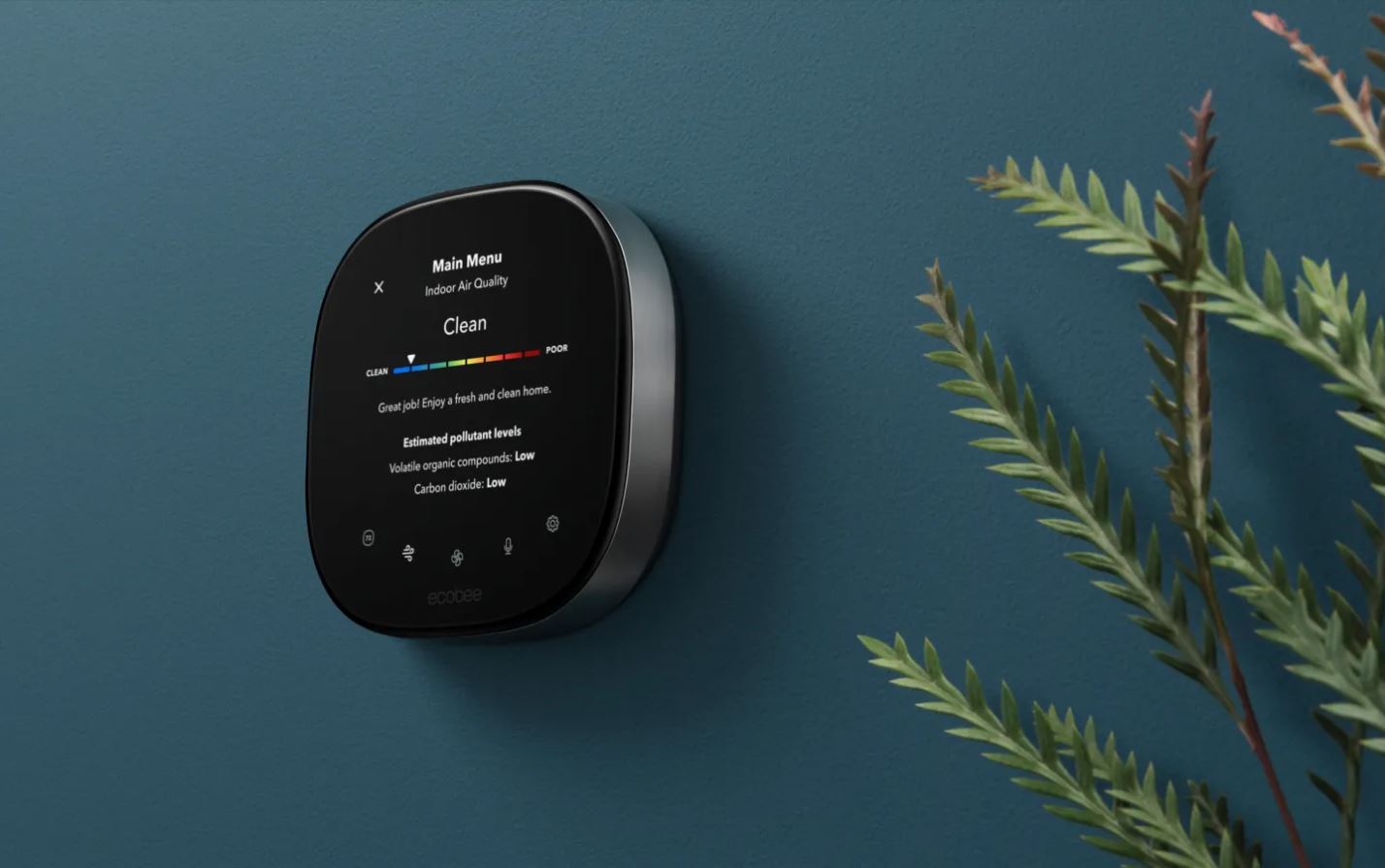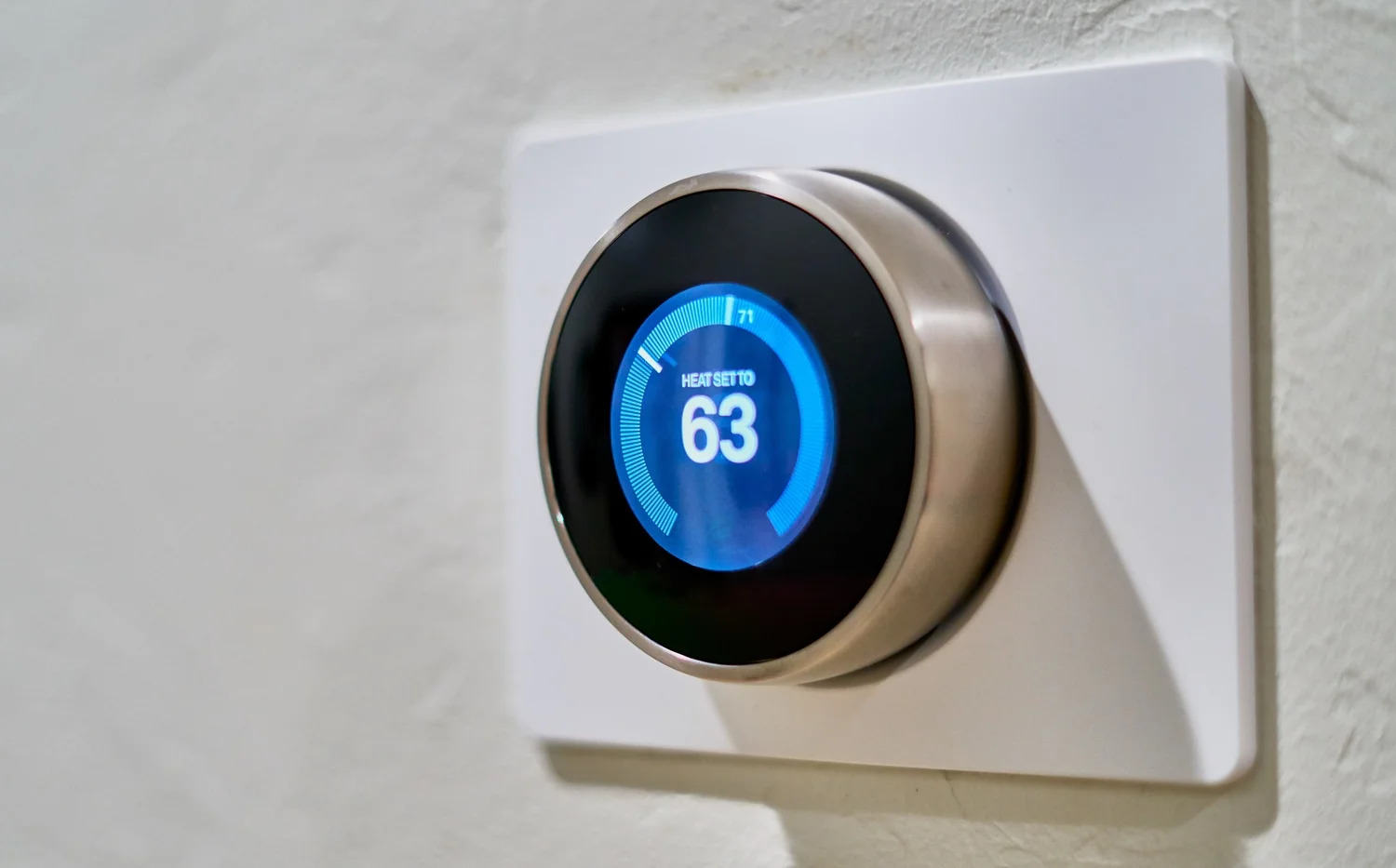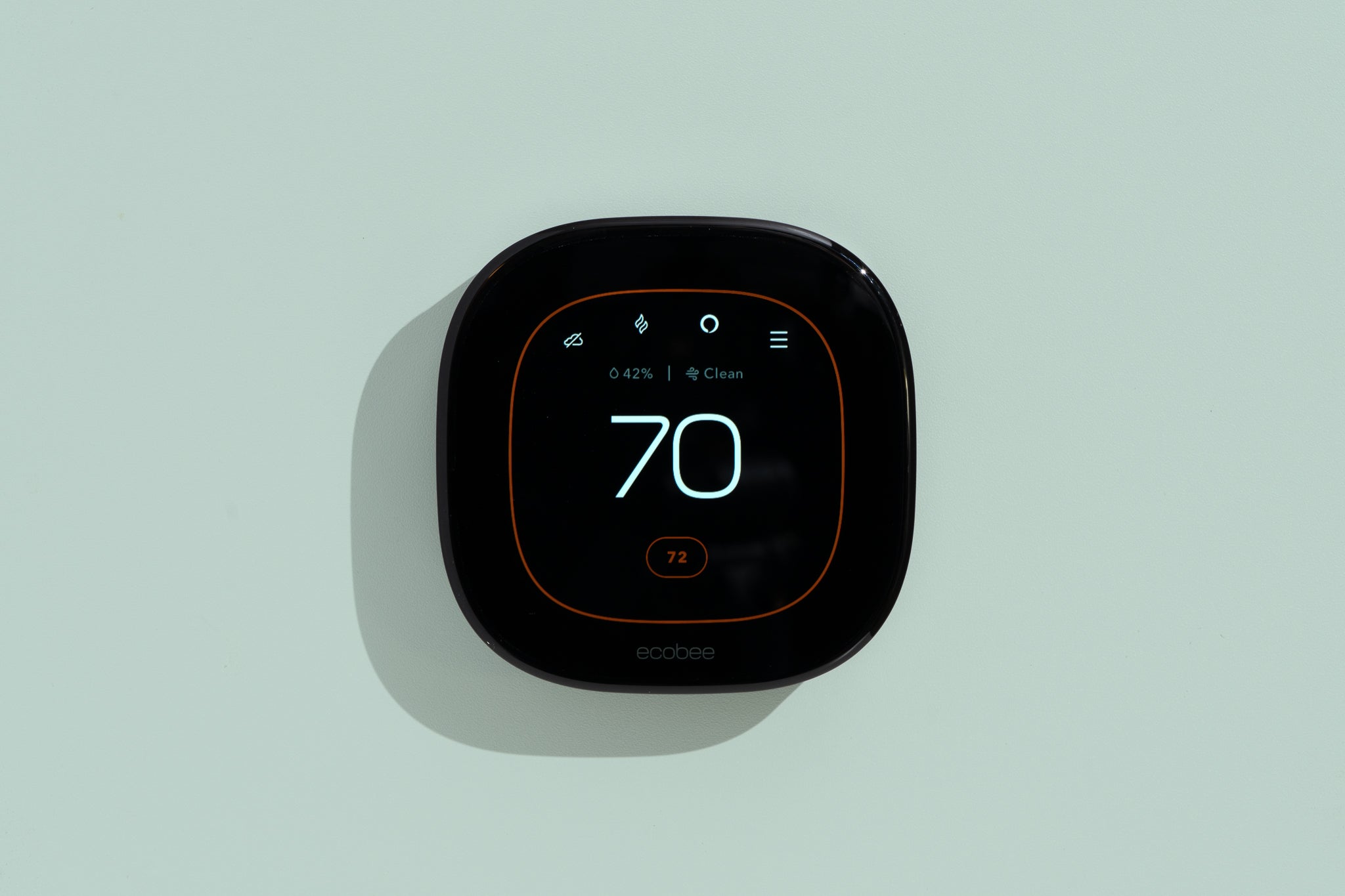Introduction
Smart thermostat sensors have revolutionized the way we manage home heating and cooling. These innovative devices offer enhanced control and efficiency, providing a more comfortable and cost-effective living environment. By leveraging advanced technology, smart thermostat sensors are designed to optimize energy usage while adapting to occupants' preferences and daily routines. Understanding how these sensors work and the benefits they offer can empower homeowners to make informed decisions about their heating and cooling systems.
The introduction of smart thermostat sensors has marked a significant advancement in home automation and energy management. These sensors are integral components of smart thermostats, which are equipped with cutting-edge features to regulate indoor temperatures effectively. By harnessing the power of sensors and connectivity, smart thermostats can learn from user behaviors, adjust settings automatically, and provide valuable insights into energy consumption.
Smart thermostat sensors offer a range of benefits, including improved energy efficiency, personalized comfort settings, and remote access via mobile applications. Additionally, these sensors contribute to environmental sustainability by reducing energy waste and carbon emissions. As the demand for energy-efficient solutions continues to grow, smart thermostat sensors have emerged as essential tools for modern homes, offering both convenience and eco-friendly operation.
As we delve into the intricacies of smart thermostat sensors, it becomes evident that these devices play a pivotal role in optimizing indoor climate control. By examining the types of sensors available, their functionality, and the considerations for their use, homeowners can gain a comprehensive understanding of how smart thermostat sensors can elevate their living spaces. Let's explore the world of smart thermostat sensors and uncover the mechanisms that drive their efficiency and effectiveness.
What are Smart Thermostat Sensors?
Smart thermostat sensors are sophisticated devices that monitor and detect various environmental factors within a home, enabling precise control over heating, ventilation, and air conditioning (HVAC) systems. These sensors are designed to gather data on temperature, humidity, occupancy, and other relevant parameters, allowing smart thermostats to make informed adjustments to indoor climate settings. By continuously analyzing environmental conditions, smart thermostat sensors facilitate adaptive and energy-efficient HVAC management, ultimately enhancing the comfort and well-being of occupants.
Equipped with advanced technology, smart thermostat sensors serve as the sensory network of smart HVAC systems, capturing real-time data and relaying it to the central control unit. This seamless communication enables the thermostat to respond intelligently to changing conditions, optimizing energy usage and minimizing wastage. In addition to environmental monitoring, some sensors also incorporate motion detection and proximity sensing features to ascertain occupancy patterns, further refining the system’s operational logic.
Smart thermostat sensors come in various forms, each tailored to address specific aspects of indoor climate control. From temperature and humidity sensors to occupancy and proximity detectors, these components work in harmony to create a comprehensive understanding of the home environment. By leveraging this multifaceted data, smart thermostats can deliver personalized comfort while promoting energy efficiency, making them indispensable tools for modern home automation.
Furthermore, the integration of smart thermostat sensors with wireless connectivity and mobile applications enables remote monitoring and control, empowering users to manage their HVAC systems from anywhere. This connectivity also facilitates data analysis and the generation of insights regarding energy consumption patterns, allowing homeowners to make informed decisions about optimizing their HVAC systems for greater efficiency and cost savings.
Types of Smart Thermostat Sensors
Smart thermostat sensors encompass a diverse array of specialized components, each designed to fulfill distinct roles in monitoring and regulating indoor environments. Understanding the various types of sensors is crucial for comprehending the comprehensive capabilities of smart HVAC systems and their potential impact on energy efficiency and comfort.
1. Temperature Sensors: These sensors are fundamental for assessing ambient temperature levels within different zones of a home. By providing accurate temperature readings, smart thermostats can adjust heating and cooling settings to maintain optimal comfort while minimizing energy consumption.
2. Humidity Sensors: Humidity plays a crucial role in indoor comfort and air quality. Humidity sensors enable smart thermostats to monitor and control moisture levels, preventing issues such as mold growth and discomfort due to excessively dry or humid air.
3. Occupancy Sensors: Occupancy sensors detect human presence within a space, allowing smart thermostats to adjust settings based on activity. When a room is unoccupied, the thermostat can conserve energy by adjusting the temperature or activating energy-saving modes.
4. Proximity Sensors: Proximity sensors determine the presence of individuals in close proximity to the thermostat or within specific areas of a home. This data can influence the thermostat’s operation, ensuring that adjustments are made based on the occupants’ proximity to the device.
5. Motion Sensors: Motion sensors detect movement within a space, providing valuable insights into occupancy patterns. By analyzing motion data, smart thermostats can optimize temperature settings and energy usage to align with occupants’ routines and habits.
6. Light Sensors: Light sensors contribute to energy efficiency by adjusting HVAC settings based on natural light levels. This feature can help optimize energy usage by coordinating HVAC operation with natural lighting conditions, reducing the reliance on artificial lighting and cooling systems.
These diverse sensor types collectively form the sensory infrastructure of smart thermostats, enabling precise environmental monitoring and adaptive control. By leveraging the data provided by these sensors, smart HVAC systems can deliver personalized comfort and energy savings, making them indispensable components of modern home automation.
How Do Smart Thermostat Sensors Work?
Smart thermostat sensors operate through a combination of advanced technology, data analysis, and adaptive control mechanisms to optimize indoor climate management. These sensors play a pivotal role in gathering real-time environmental data and facilitating intelligent decision-making by the thermostat, ultimately enhancing comfort, energy efficiency, and user convenience.
When installed in key locations throughout a home, smart thermostat sensors continuously monitor temperature, humidity, occupancy, and other relevant parameters. The sensors then transmit this data to the central control unit of the smart thermostat, where it is analyzed to assess the current environmental conditions. Based on this analysis, the thermostat can make precise adjustments to the HVAC system, ensuring that the indoor climate remains comfortable and energy-efficient.
Temperature sensors are fundamental to the operation of smart thermostats, providing accurate readings that serve as the basis for heating and cooling adjustments. By monitoring temperature variations in different zones of a home, these sensors enable the thermostat to implement zone-based climate control, optimizing comfort and energy usage based on specific areas’ needs.
Humidity sensors contribute to indoor air quality and comfort by detecting moisture levels and prompting the thermostat to adjust settings accordingly. This feature is particularly beneficial in regions with fluctuating humidity levels, as it helps prevent issues such as mold growth and discomfort due to excessively dry or humid air.
Occupancy and proximity sensors play a crucial role in optimizing energy usage by detecting human presence and proximity to the thermostat. When a room is unoccupied or when occupants are in close proximity to the thermostat, these sensors trigger adjustments that conserve energy, such as adjusting temperature settings or activating energy-saving modes.
Furthermore, motion and light sensors provide valuable insights into occupancy patterns and natural lighting conditions. By analyzing motion data and light levels, smart thermostats can fine-tune their operations to align with occupants’ routines and natural lighting, further optimizing energy usage and comfort.
Smart thermostat sensors, in conjunction with the thermostat’s control algorithms, enable adaptive and personalized climate control. By leveraging the data collected by these sensors, smart thermostats can learn from user behaviors, anticipate preferences, and make proactive adjustments to create an ideal indoor environment while minimizing energy waste.
Overall, the seamless integration of smart thermostat sensors with advanced control algorithms empowers these devices to deliver precise and efficient climate management, enhancing comfort and energy savings for homeowners.
Benefits of Using Smart Thermostat Sensors
Smart thermostat sensors offer a multitude of advantages that contribute to enhanced comfort, energy efficiency, and user convenience. By harnessing advanced technology and real-time data, these sensors play a pivotal role in optimizing indoor climate control and delivering a range of benefits to homeowners.
1. Energy Efficiency: Smart thermostat sensors enable precise monitoring and adjustment of HVAC settings based on real-time environmental data, resulting in optimized energy usage. By adapting to occupancy patterns and environmental conditions, these sensors help minimize energy waste and reduce utility costs.
2. Personalized Comfort: The data gathered by smart thermostat sensors allows for personalized climate control, catering to occupants’ preferences and habits. By adjusting settings based on occupancy and activity, these sensors ensure that indoor environments remain comfortable and tailored to individual needs.
3. Remote Accessibility: The integration of smart thermostat sensors with wireless connectivity and mobile applications enables remote monitoring and control of HVAC systems. This feature empowers users to adjust settings and monitor energy usage from anywhere, enhancing convenience and flexibility.
4. Environmental Sustainability: Smart thermostat sensors contribute to environmental sustainability by promoting energy-efficient HVAC operation. By minimizing energy consumption and optimizing climate control, these sensors help reduce carbon emissions and environmental impact.
5. Cost Savings: The energy efficiency facilitated by smart thermostat sensors translates into cost savings for homeowners. By reducing energy waste and optimizing HVAC operation, these sensors contribute to lower utility bills and long-term savings on energy expenses.
6. Adaptive Control: Smart thermostat sensors enable adaptive control mechanisms that learn from user behaviors and environmental conditions. By analyzing data from temperature, humidity, occupancy, and proximity sensors, smart thermostats can make proactive adjustments to optimize comfort and energy efficiency.
7. Enhanced Air Quality: Humidity sensors integrated into smart thermostats contribute to improved indoor air quality by monitoring and controlling moisture levels. This feature helps prevent issues such as mold growth and discomfort due to excessively dry or humid air, promoting a healthier living environment.
8. Insights and Analytics: Smart thermostat sensors provide valuable insights into energy consumption patterns and environmental conditions. By analyzing this data, homeowners can gain a better understanding of their energy usage and make informed decisions about optimizing their HVAC systems for greater efficiency.
Overall, the utilization of smart thermostat sensors offers a comprehensive range of benefits, ranging from energy efficiency and cost savings to personalized comfort and environmental sustainability. These sensors represent a significant advancement in home climate control, empowering homeowners to create comfortable, efficient, and eco-friendly living spaces.
Considerations When Using Smart Thermostat Sensors
While smart thermostat sensors offer numerous advantages, several considerations should be taken into account to maximize their effectiveness and ensure seamless integration into home HVAC systems. By addressing these considerations, homeowners can make informed decisions about the implementation and utilization of smart thermostat sensors, optimizing their impact on energy efficiency and comfort.
1. Compatibility: When selecting smart thermostat sensors, it is essential to ensure compatibility with the existing HVAC system and the chosen smart thermostat. Compatibility issues can hinder the seamless integration and functionality of the sensors, potentially limiting their effectiveness in optimizing climate control.
2. Placement and Coverage: Proper placement of smart thermostat sensors is crucial to ensure accurate monitoring of environmental conditions. Consider the placement of sensors in various zones of the home to capture comprehensive data on temperature, humidity, and occupancy, enabling precise and adaptive climate control.
3. Calibration and Settings: Calibration of smart thermostat sensors and fine-tuning of settings are essential to optimize their performance. Adjusting temperature differentials, occupancy detection thresholds, and other sensor-specific settings can enhance the accuracy and responsiveness of the sensors, leading to more effective climate management.
4. User Behavior Learning: Smart thermostat sensors rely on data analysis and user behavior learning to deliver personalized comfort and energy efficiency. Homeowners should allow the sensors and the associated smart thermostat to collect and analyze data over time to optimize their adaptive control mechanisms based on occupants’ habits and preferences.
5. Maintenance and Upkeep: Regular maintenance of smart thermostat sensors is crucial to ensure their continued accuracy and reliability. Periodic cleaning, battery replacement (if applicable), and software updates for the associated smart thermostat are essential to maintain optimal sensor performance.
6. Security and Privacy: As smart thermostat sensors are connected devices, ensuring security and privacy is paramount. Homeowners should implement robust security measures, such as secure network configurations and regular firmware updates, to safeguard the data collected by the sensors and prevent unauthorized access.
7. User Education: Educating household members about the functionality and benefits of smart thermostat sensors is essential to maximize their impact. By understanding how the sensors operate and the role they play in optimizing comfort and energy efficiency, occupants can actively contribute to the effective utilization of the sensors.
8. Environmental Considerations: Smart thermostat sensors contribute to environmental sustainability, but it is important to consider their environmental impact. Selecting sensors with minimal environmental footprint and responsibly disposing of old or obsolete sensors aligns with eco-friendly practices.
By taking these considerations into account, homeowners can ensure that smart thermostat sensors are effectively integrated into their HVAC systems, maximizing their potential to deliver energy-efficient, personalized, and adaptive climate control.
Conclusion
Smart thermostat sensors represent a transformative advancement in home climate control, offering a diverse array of benefits and capabilities that cater to the evolving needs of homeowners. By harnessing the power of advanced sensors, data analysis, and adaptive control mechanisms, smart thermostats equipped with these sensors have redefined the way indoor environments are managed, fostering energy efficiency, personalized comfort, and environmental sustainability.
From temperature and humidity sensors to occupancy and proximity detectors, the multifaceted capabilities of smart thermostat sensors enable precise monitoring and adaptive control of HVAC systems, optimizing energy usage while ensuring optimal comfort for occupants. The integration of these sensors with wireless connectivity and mobile applications further enhances user convenience, allowing for remote monitoring and control of HVAC systems from anywhere.
As homeowners embrace the potential of smart thermostat sensors, considerations such as compatibility, placement, calibration, and user education play crucial roles in maximizing the effectiveness of these devices. By addressing these considerations, homeowners can ensure seamless integration, optimal performance, and long-term benefits from smart thermostat sensors.
Overall, the utilization of smart thermostat sensors has ushered in a new era of intelligent and energy-efficient home climate control. These sensors have not only empowered homeowners to reduce energy consumption and utility costs but also contributed to creating healthier and more comfortable living environments. As the demand for sustainable and connected home solutions continues to grow, smart thermostat sensors stand as indispensable tools for modern homeowners seeking to enhance their quality of life while minimizing their environmental impact.
Embracing the potential of smart thermostat sensors is not merely a technological advancement; it is a commitment to creating homes that are efficient, comfortable, and environmentally conscious. By leveraging the capabilities of smart thermostat sensors, homeowners can embark on a journey toward a more sustainable and personalized approach to indoor climate control, redefining the way they interact with and manage their living spaces.







